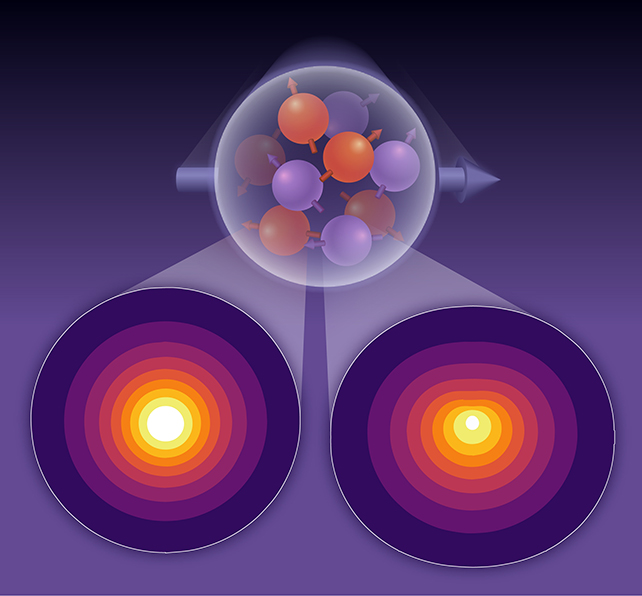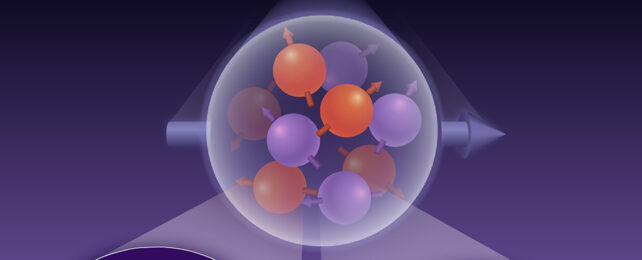The protons and neutrons making up atomic nuclei are made up of a trio of even smaller fundamental particles known as quarks.
A new study has now mapped out in unprecedented detail the distribution of the different kinds of quark inside a proton, expanding on our understanding of this all-important part of an atom.
Although the quantum landscape within protons is a seething mess of quarks and their opposing antiquarks popping in and out of existence, there is a general dominance of two 'flavors' over the others; two up-flavor quarks and a single down-flavor quark.
Lead by theoretical physicist Shohini Bhattacharya from Brookhaven National Laboratory, a team of researchers have now created the highest resolution map yet of the two flavors of quark.
"Our calculations show that the up quark is more symmetrically distributed and spread over a smaller distance than the down quark," says theoretical physicist Swagato Mukherjee, from Brookhaven Lab.
The findings of the researchers suggest that the up and down quarks affect the proton differently in terms of internal energy, spin, and various other properties. That in turn should help in the analysis of future fundamental physics experiments.

You can think of this as like a study of a bag of marbles: the bag is the proton and the quarks are the marbles held loosely into place by force-mediating 'gluon' particles. The research mapped out the interactions between these marbles with each other.
A variety of advanced analytical techniques were used to bounce scattered light into the particles and calculate their changes in momentum. Previously such calculations had assumed changes in momentum would be equal throughout, but the team's calculations confirmed otherwise.
This allowed them to measure more scattering events with greater accuracy without increasing the computing power. They then applied their more precise findings to models for further insights.
"To obtain a detailed map, we need to analyze many scattering interactions, involving various values of momentum change of the proton," says Bhattacharya.
Incredibly, the reactions of the up and down quarks accounted for less than 70 percent of the proton's (the bag's) spin. This suggests the gluons are playing a greater role than previously assumed.
One of the key techniques used was lattice quantum chromodynamics (QCD), which places quarks on a 4D structure in order to accurately model them with a little help from a supercomputer. All possible interactions are assessed, and then the various probabilities of each one is worked out.
Ultimately, the team was able to map out this bag of marbles in a resolution some 10 times greater than previous efforts. When it comes to fundamental physics work like this, that higher resolution can make a huge difference.
Scientists are still learning more about quarks and how these fundamental particles set the groundwork for so much of what we see in the Universe.
Further experiments using the new calculations as a basis are already planned for the Continuous Electron Beam Accelerator Facility (CEBAF) and the Electron-Ion Collider (EIC) – experiments that will look at the foundational laws of nature and matter itself. Those experiments should help validate the models produced by this study.
"These two complementary things – the theory and experiment – have to be combined to get the complete image of the proton," says physicist Joshua Miller, from Temple University.
The research has been published in Physical Review D.
